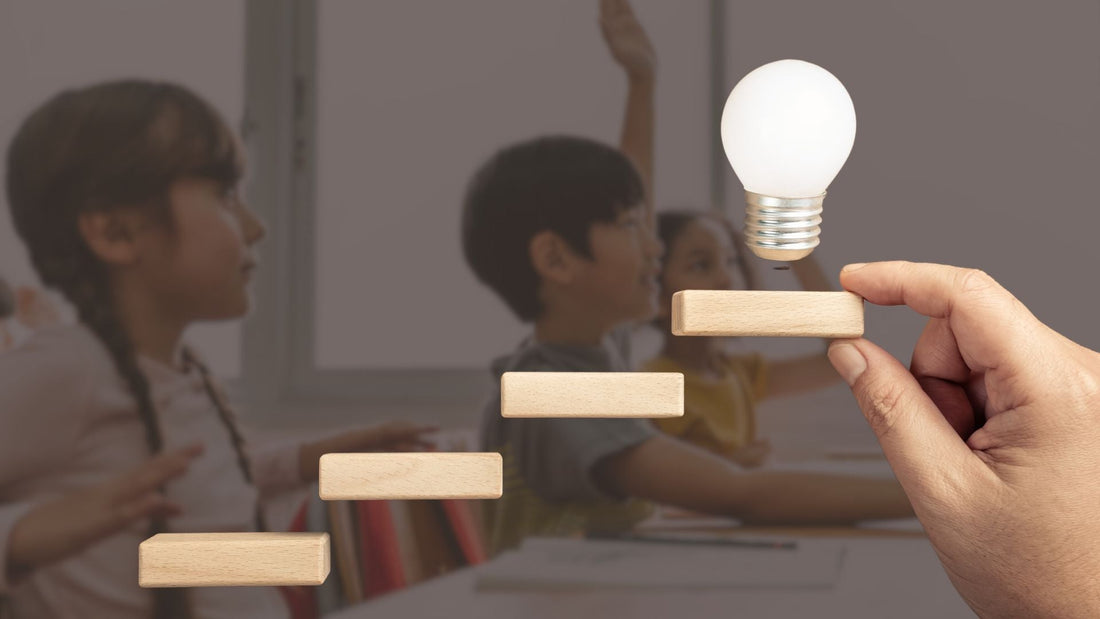
Schlechty's Levels of Engagement: Understanding and Promoting Active Learning in the Classroom
Share
Phillip Schlechty, an American educator and researcher, is renowned for his contributions to the field of educational leadership and student engagement. As the founder of the Schlechty Center for Leadership in School Reform, Schlechty has dedicated his career to exploring the dynamics of student engagement and how it impacts the learning process. His work, particularly around levels of engagement, has become a crucial framework for understanding how students interact with their learning environments. Schlechty’s seminal model of engagement in learning has had widespread influence on how educators design their teaching strategies, creating opportunities for deeper learning experiences for students.
The Importance of Authentic Engagement
Authentic engagement refers to the active, meaningful participation of students in the learning process. It goes beyond simply attending class or completing assignments—it involves students being fully immersed in and motivated by the tasks at hand. When students are authentically engaged, they are more likely to retain information, apply their learning to real-world contexts, and develop critical thinking and problem-solving skills. Schlechty's research emphasizes that engagement is not merely a passive state but a dynamic and interactive process between the student, the teacher, and the learning content.
Research underscores the importance of authentic engagement. According to a study by Fredricks, Blumenfeld, and Paris (2004), student engagement is a key predictor of academic success. Engaged students demonstrate higher academic achievement, better classroom behavior, and an increased likelihood of graduating. In contrast, students who are disengaged often struggle with lower academic performance, more frequent absenteeism, and diminished long-term educational outcomes.
Schlechty's Levels of Engagement
Schlechty identified five distinct levels of student engagement, ranging from passive compliance to genuine, active participation. Each level of engagement reflects a different type of student response to the learning environment. Below, we describe each level with relatable examples to better illustrate how these levels manifest in the classroom.
-
Engagement (Authentic)
At this highest level of engagement, students are not just compliant or passively participating—they are deeply involved in their learning. They see value in the task, enjoy solving problems, and actively engage in discussions.
Example: In a history class, students might actively participate in a debate about historical events, researching facts, and presenting their viewpoints in a collaborative manner. The task excites them because they see its relevance and feel they are contributing meaningfully to their understanding of the subject. -
Compliance (Required)
At this level, students are simply doing what is required to meet expectations. They are not intrinsically motivated, but they follow instructions in order to avoid negative consequences or to receive a grade. While they complete tasks, their engagement is more about fulfilling external requirements than personal interest or understanding.
Example: A student may complete a science experiment simply because it is assigned, not because they are interested in the outcome or the process. They follow instructions step by step but show little enthusiasm or curiosity about the subject matter. -
Ritualistic Compliance
Students at this level perform tasks in a routine, mechanical way without any real engagement. They often do just enough to get by and may display little effort or interest in the outcome of the task. This type of compliance is driven more by habit than by any real desire to learn.
Example: A student might do homework only to avoid getting into trouble, but they don’t put any real thought into the work. They quickly finish the assignment without engaging with the material, resulting in minimal learning or growth. -
Retreatism
Students at this level are disengaged, either because they do not see value in the learning task or because they are disconnected from the classroom environment. They may daydream, withdraw from group work, or refuse to participate altogether.
Example: A student might be sitting in class but is mentally checked out, scrolling through their phone or simply staring out the window. They are present physically but emotionally and intellectually absent, showing little motivation to engage with the learning process. -
Rebellion
The lowest level of engagement involves students who not only disengage but also actively resist the learning process. These students may challenge authority, disrupt class activities, or purposefully avoid completing assignments. Rebellion can be a sign of frustration or a lack of connection with the learning environment.
Example: A student might openly argue with the teacher about the relevance of a particular lesson, refuse to follow instructions, or intentionally complete assignments poorly as an act of defiance. This behavior can often be an expression of deeper dissatisfaction with the learning environment or teaching methods.
The Impact of Disengagement on Learning
Disengagement has significant consequences for student learning. Studies have shown that students who are disengaged are less likely to retain information, apply concepts in real-world situations, or develop essential skills. A study by Appleton, Christenson, and Furlong (2008) found that disengaged students are more likely to drop out of school and face academic challenges. Furthermore, disengagement can lead to increased disruptive behavior, affecting the learning experience of others in the classroom.
A lack of engagement hinders not only academic achievement but also the development of crucial life skills. Skills such as critical thinking, collaboration, and problem-solving are best cultivated in environments where students are genuinely engaged. Without authentic engagement, students may fail to develop these competencies, leaving them unprepared for the challenges of higher education or the workforce.
Promoting Active Learning with Schlechty's Framework
Schlechty’s Levels of Engagement provide a useful tool for teachers to identify where their students are on the engagement spectrum and adjust their teaching methods accordingly. By fostering an environment that promotes authentic engagement, teachers can create learning experiences that are meaningful, challenging, and relevant to students’ lives.
-
Create Challenging and Relevant Learning Tasks
To encourage authentic engagement, teachers should design tasks that challenge students and connect to real-world issues. Tasks should require higher-order thinking, problem-solving, and collaboration. For example, instead of assigning rote memorization tasks, teachers might design projects that require students to apply what they’ve learned to solve a community problem or create a product. -
Provide Choice and Autonomy
Giving students some control over their learning can increase motivation and engagement. Schlechty’s framework emphasizes the importance of student agency. Allowing students to choose topics, methods of learning, or even assessment formats can make them feel more invested in the process. -
Foster a Positive Classroom Climate
A positive, supportive environment is essential for engagement. Teachers should build relationships with their students, creating a classroom culture where students feel safe to share ideas, take risks, and challenge themselves. -
Encourage Active Participation
Moving away from traditional lecture-based teaching toward more interactive, student-centered approaches can increase engagement. Techniques like group discussions, peer teaching, and hands-on activities provide opportunities for students to actively participate in their learning. -
Provide Immediate Feedback and Recognition
Engaged students need to know how they are progressing. Providing timely and constructive feedback helps students see their growth and identify areas for improvement, further motivating them to stay engaged with the learning process.
Schlechty's Levels of Engagement offer a valuable framework for understanding how students interact with their learning environments. By recognizing where students fall on the engagement spectrum, teachers can better tailor their teaching strategies to foster authentic, meaningful learning experiences. Ultimately, promoting active learning and increasing authentic engagement can help students develop critical skills, achieve academic success, and become more prepared for the future.
References
-
Appleton, J. J., Christenson, S. L., & Furlong, M. J. (2008). Student Engagement with School: Critical Conceptual and Methodological Issues of the Construct. Psychology in the Schools, 45(5), 369–386.
-
Fredricks, J. A., Blumenfeld, P. C., & Paris, A. H. (2004). School Engagement: Potential of the Concept, State of the Evidence. Review of Educational Research, 74(1), 59-109.
